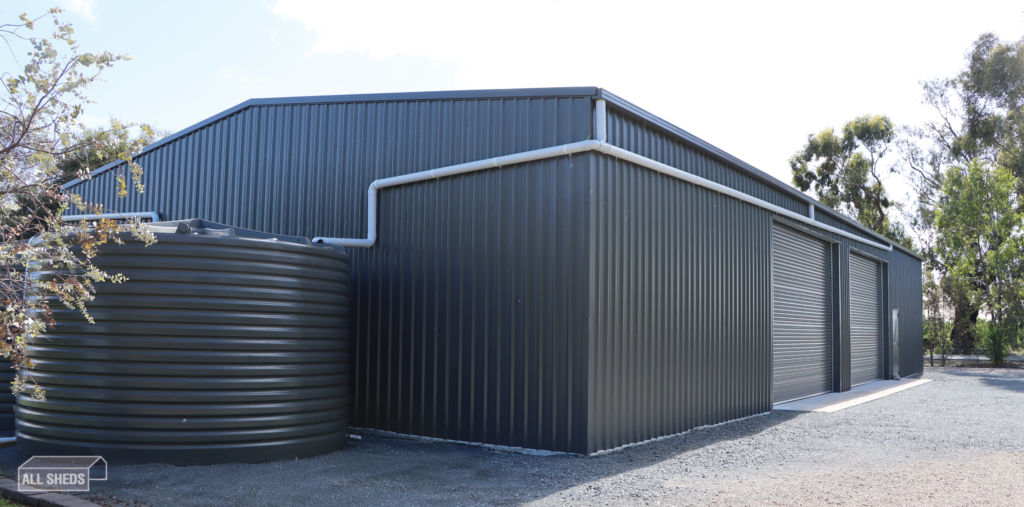
There’s nothing like the excitement of seeing your shed take shape, whether it’s for storage, a workshop, or something a little more custom. But one detail that often gets overlooked (and can delay your final inspection) is your downpipes.
They might seem minor, but downpipes play a major role in keeping your shed compliant, protected, and fully insured.
Residential Builds: Connect to the Legal Point of Discharge
If your new shed is in a residential area, your downpipes must be connected to the legal point of discharge, even if you’re installing a water tank. The tank’s overflow must still connect to the stormwater system to meet local council requirements.
Skip this step, and you risk water pooling, structural damage, and Certificate of Occupancy delays.
Rural Builds: Keep Runoff Away
In rural settings, downpipes can drain onto the ground but only if it’s at least 4 metres away from the shed. Any closer, and you could face long-term issues like erosion or water damage, especially in areas with poor drainage or heavy rainfall.
Why It Matters for Your Permit and Insurance
Your final inspection often includes checking that your downpipes and drainage are installed to council regulations. Without that sign-off, your shed won’t be approved, and it may not be fully covered under your home insurance until the Certificate of Occupancy (or final inspection certificate) is issued.
Making this seemingly small part of the build an essential one!
We’ll Help You Get It Right
At All Sheds, we don’t just build sheds, we support you through every step of the process, including plumbing coordination. Our team makes sure everything meets local requirements, so your permit process is seamless, and your shed is protected from day one.
Planning your shed build?
Talk to the team at All Sheds today, we’ll help you get it done right, from the ground up.
